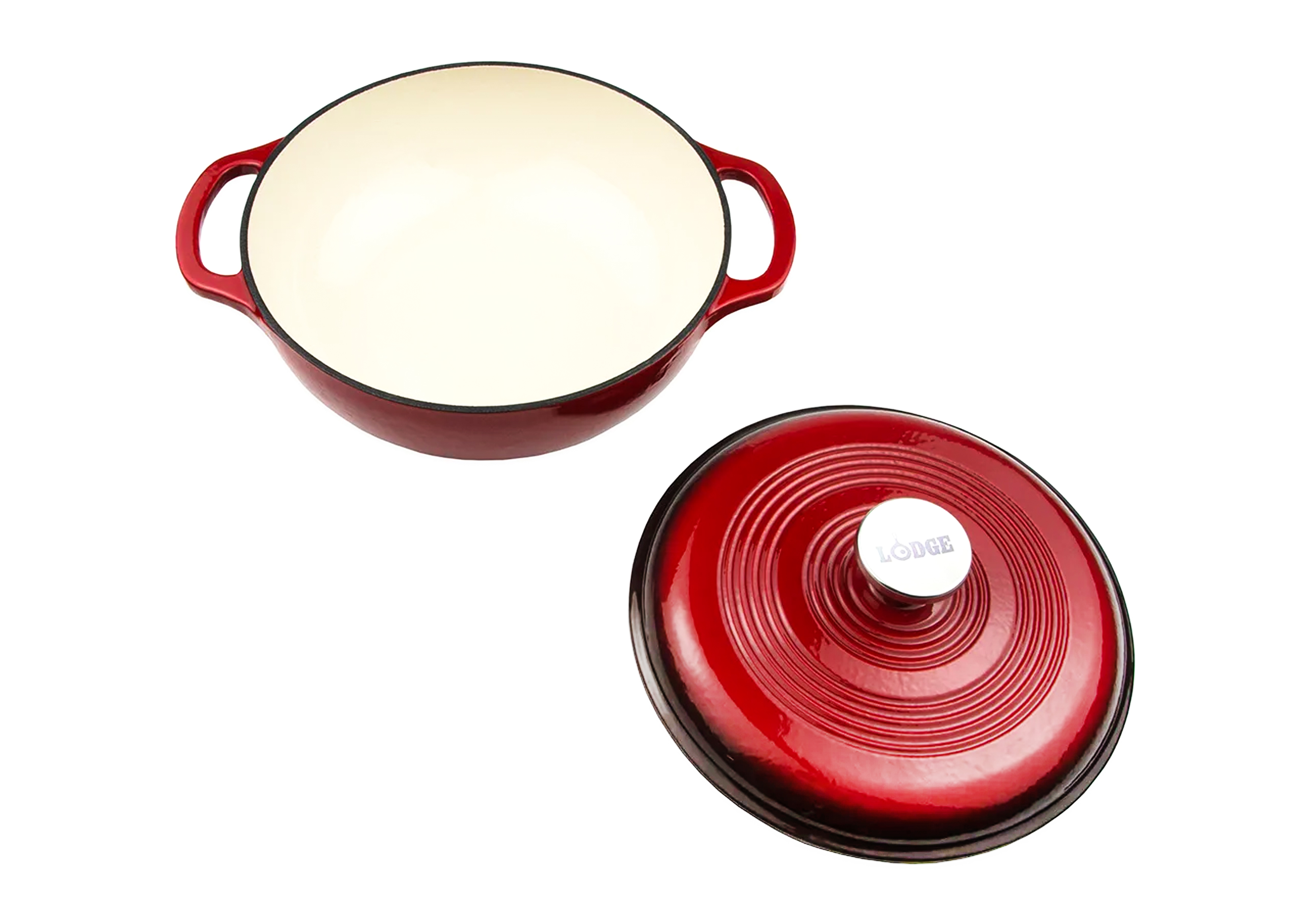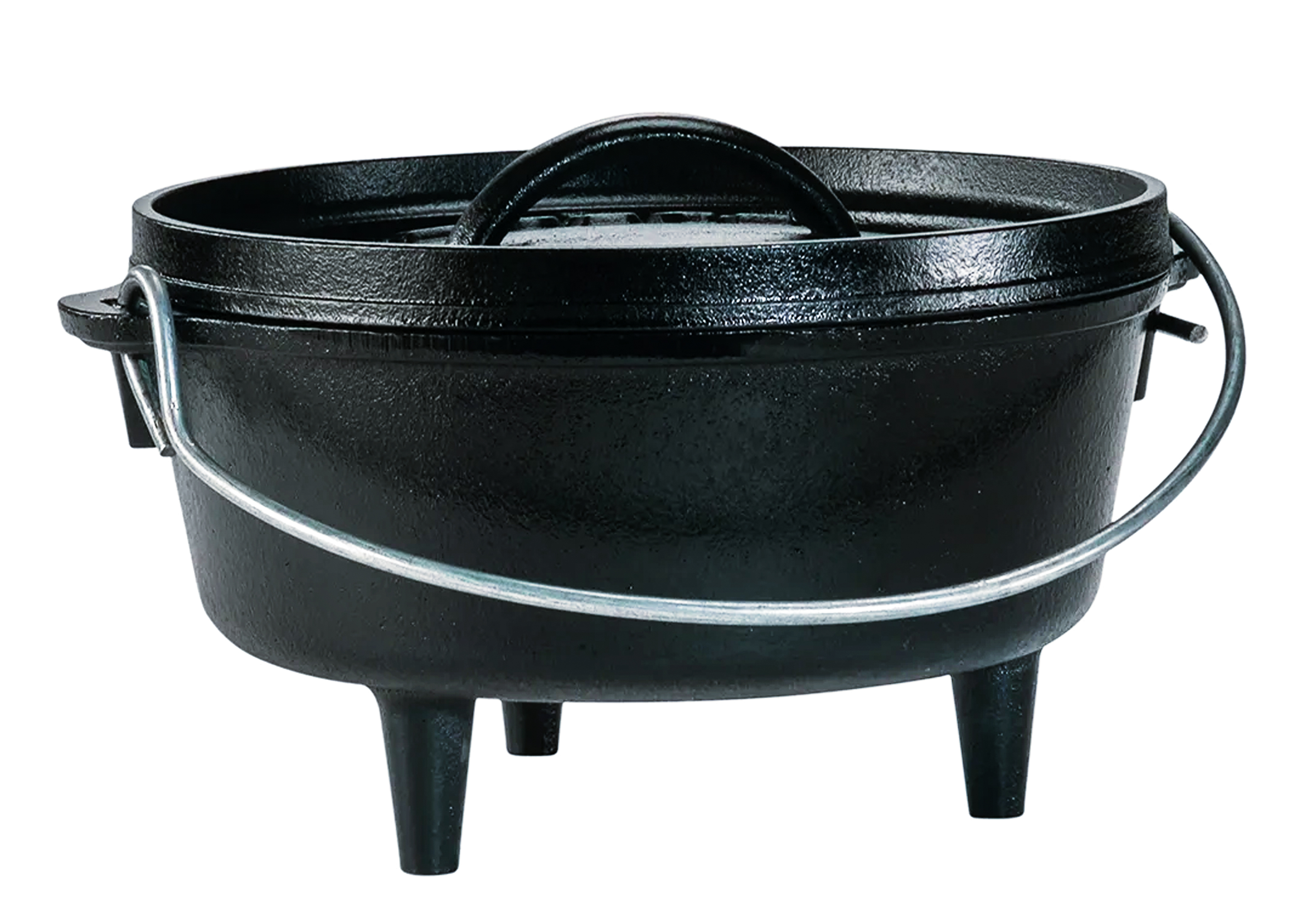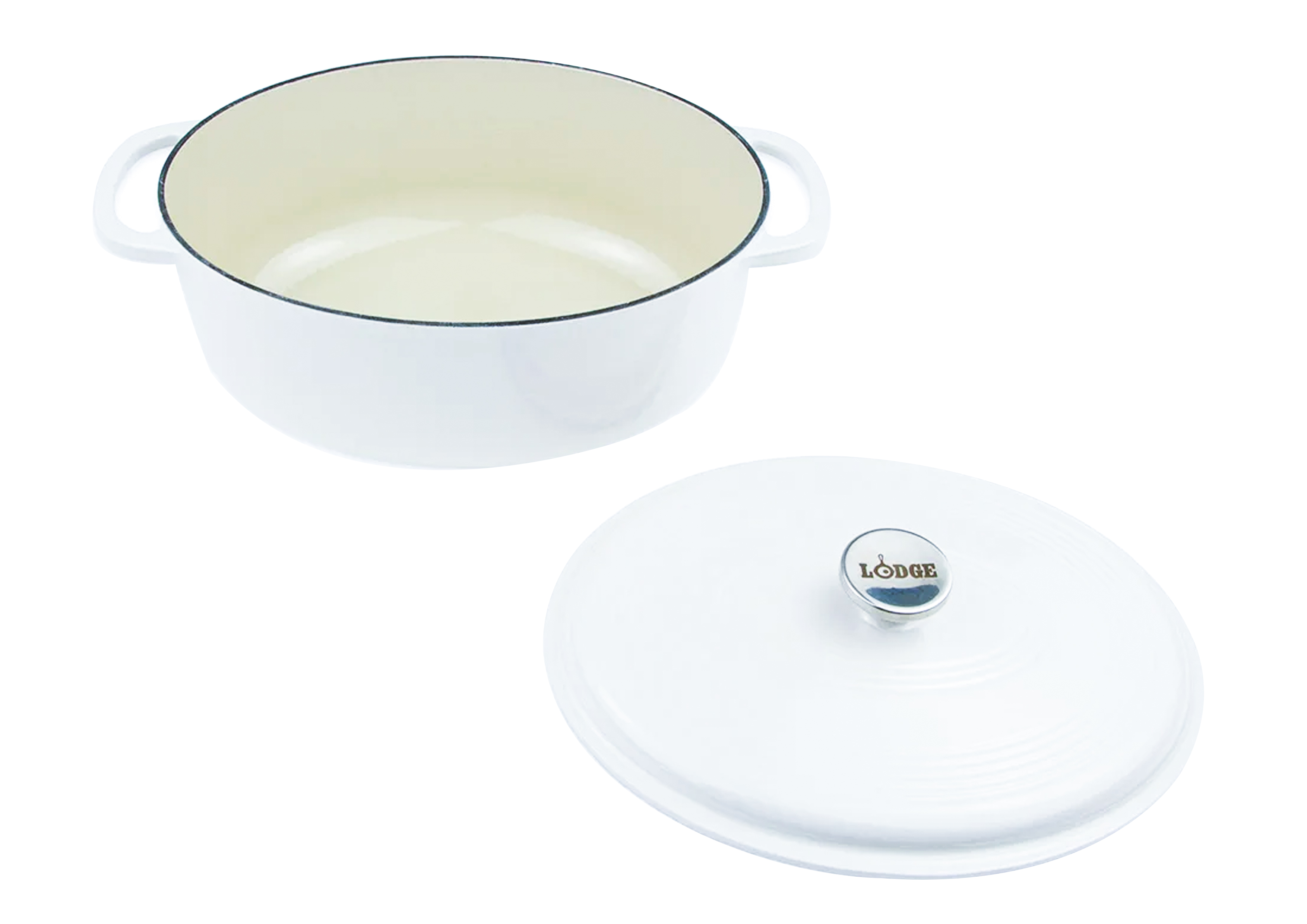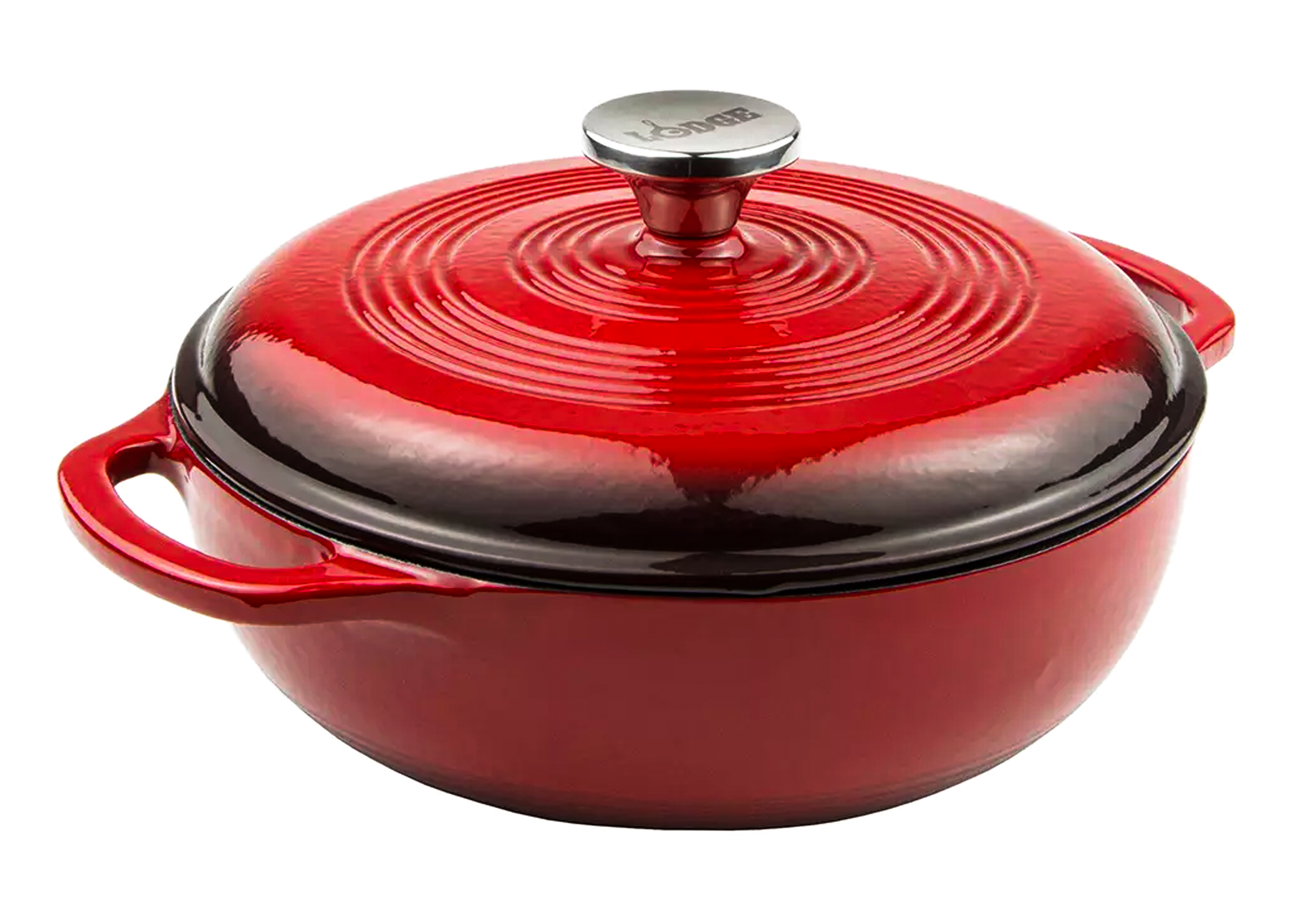Jul 7th 2022 - Monica Cunanan
What is a Dutch Oven — Uses, Types, How to Choose one
A Dutch oven is an extremely sturdy pot with a lid designed for cooking meats and vegetables at high temperatures. It can also be useful for making soups and cooking pasta. It's a popular piece for making bread as well. The enamel cast iron oven has been put on a pedestal in the current world of home cooks, and it pretty much deserves it.
Dutch ovens look similar to stockpots but have wider bottoms and slightly thinner walls than stockpots, which allows them to brown and caramelize foods better and heat retention. They're also used as serving dishes that keep food hot on a table. They also have two shorter handles on either side for balanced and even transferring in and out of an oven.
What Is a Dutch Oven Used For?
Anything you can cook in a pan you can cook in a dutch oven. Investing in a high-quality Dutch oven will be a good investment. This versatile piece is not just useful for cooking your comfort food; it's also great when it comes to where you cook. You can cook with it from stovetop to oven. You can braise meat, bake bread, make soup, one-pot meals, and even camp oven cooking!
Braising meat
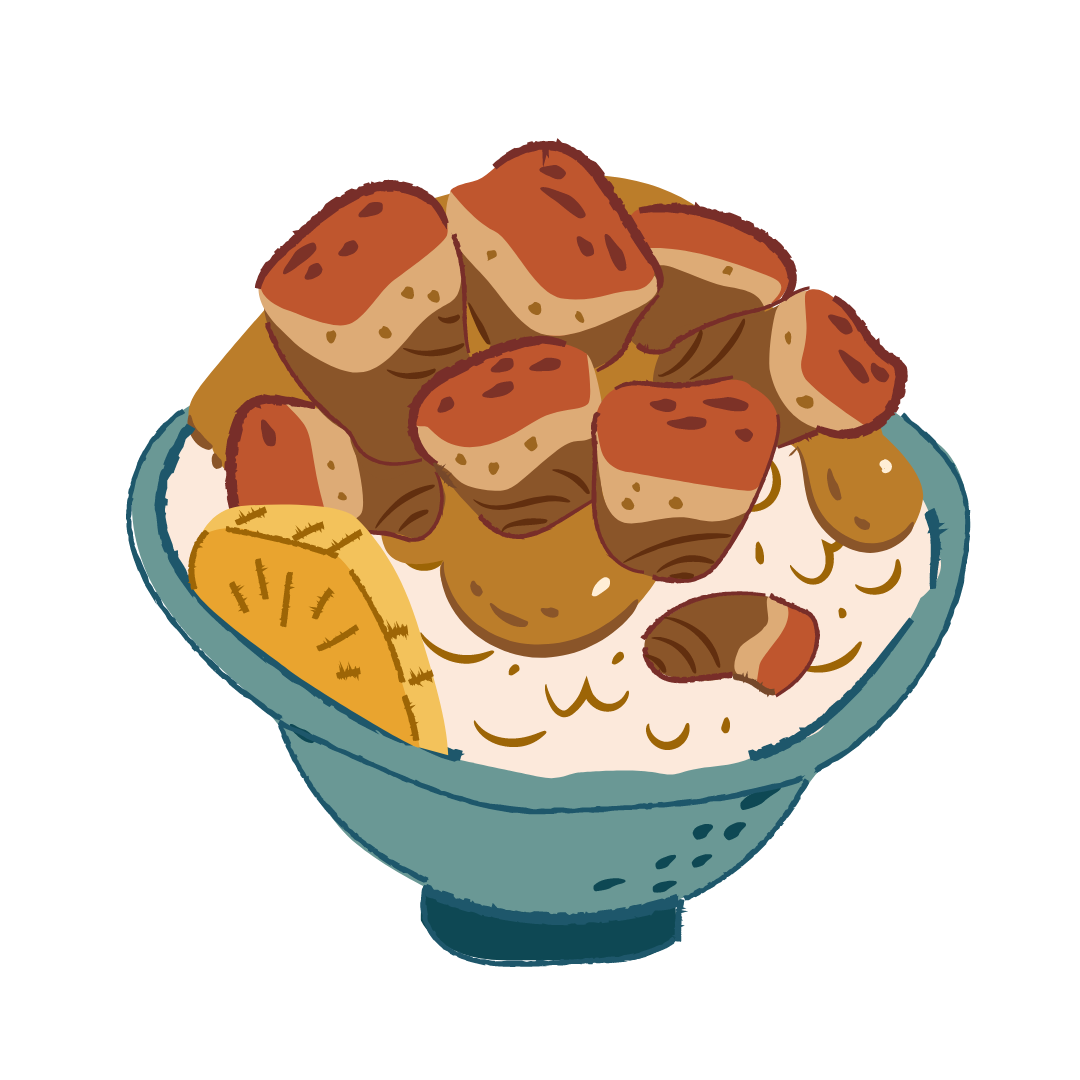
Because the heavy material is suitable for even heat distribution, you'll be able to cook meat and vegetables to tender perfection. These pieces of cookware have tight fitting lids which means you can cook meat in the oven at 300°F or on a low flame without evaporating the cooking liquids before the meat is cooked so make sure to wear your oven mitts when using them. When you braise, you cook a tough cut of pieces of meat in liquid at a low constant temperature for a long period of time. Briskets, chucks, shoulders, and shanks: the pieces that are typically less expensive than roasts.
Deep Frying
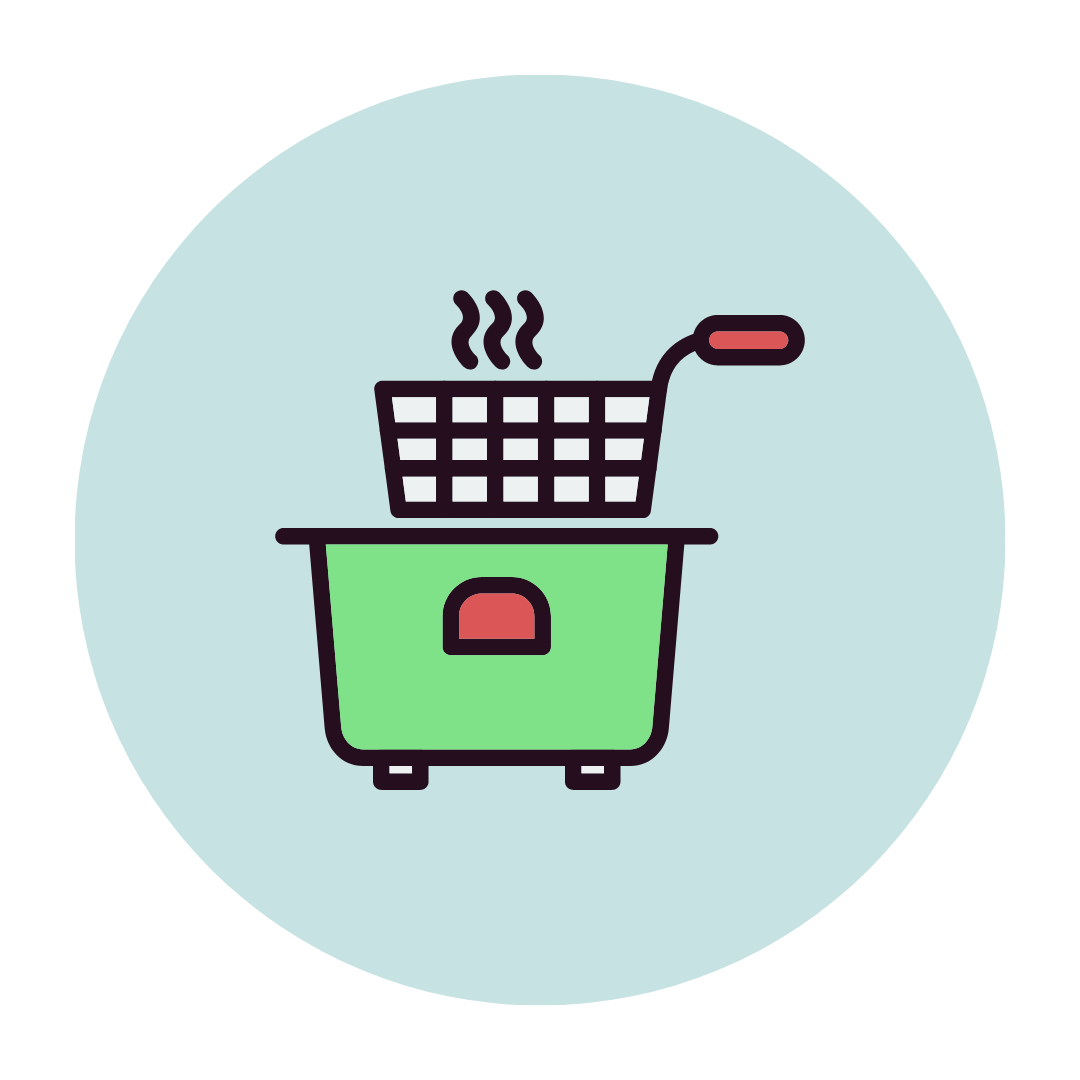
You can use a Dutch oven instead of a deep fryer when making a large amount of fried foods. A thicker pan heats up faster than a thinner one, so the time it takes for the oil to return to the perfect frying temperature is shorter when you use a thick pan. They are also made from nonstick material so you can use them instead of a deep fryer if you need a lot of oil.
Soups and stews
Dutch ovens are great for slow cooking so they're perfect for making hearty soups and stew. This cooking pot is usually generously sized, so it can hold a lot while the dish simmers away on top of the stove for a long period of time.
Bread-making
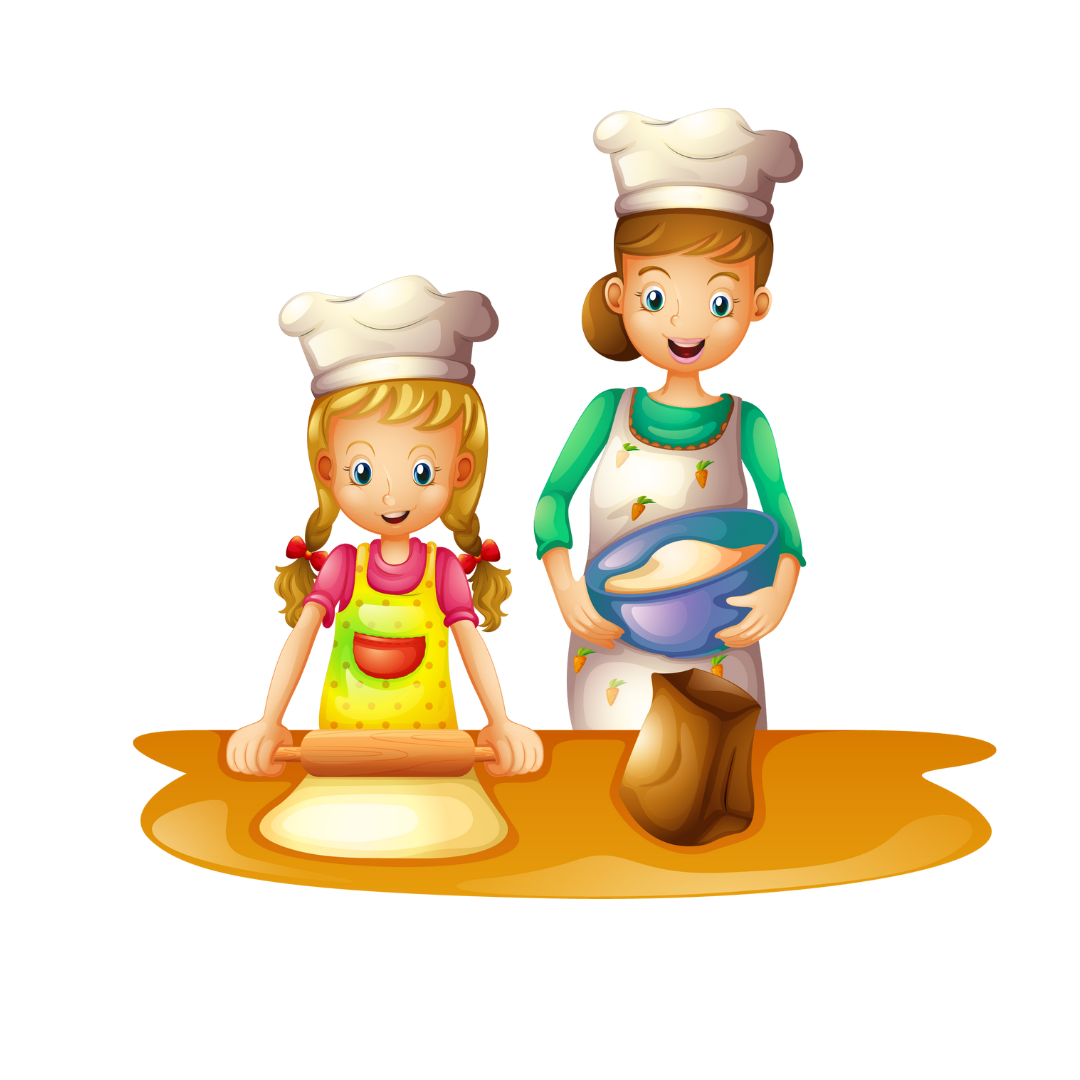
Baking bread is probably one of the most popular ways to use it. It has thick walls and a heavy lid that creates a steamy environment that helps keep the dough nice and moist. They are ideal to make sourdough or any type of no-knead bread. When you're baking, the steam that stays in the oven when the lid is closed is what gives you the best crust.
Roasting
If you're roasting a chicken in a medium-size Dutch oven, you can probably get away with roasting a turkey in a 15-quart oval. However, you may need some help getting it into and out of the oven. If the turkey is 20 pounds (45 pounds when it's in there), it's going to be quite a bit heavier than a chicken.
Camping
There are dutch ovens for camp oven cooking. They have specific features that a regular one doesn't have.
Camp ovens vs Dutch Ovens:
- The most noticeable difference between the two is their lids. A Dutch oven lid has a domed shape and usually has drippers. A camp oven's cover is thick, mostly flat, smooth-bottomed, and has a ridge encircling its upper edge. The massive lid retains heat.
Why Do you Need One?
It may sound like an overstatement, but it's true: Every serious cook should have one.
Versatile Piece
The tasks for them are endless, and they can be used almost every day: from simply searing chicken and mushrooms to whipping up an elaborate dinner like homemade bread, steamed mussels, and fried pommes frites - all made in your trusty vessel. It can even act as a chameleon, changing its role depending on your needs.
Will Last Long Periods of Time
They are made of durable materials and can last a lifetime. They've been around since the 17th Century! Of course, needs vary from person to person and while a microwave and a toaster may be enough for one home cook and some might need the latest range of kitchen equipment. You don't need to own a Dutch oven to cook, but there are several reasons why they're worth the investment.
A Dutch oven can be expensive, but it doesn't need to cost top dollar. If you do decide to splurge, you'll be pleased to know that Dutch ovens last for years, and even decades.
Dutch oven vs Stock Pots
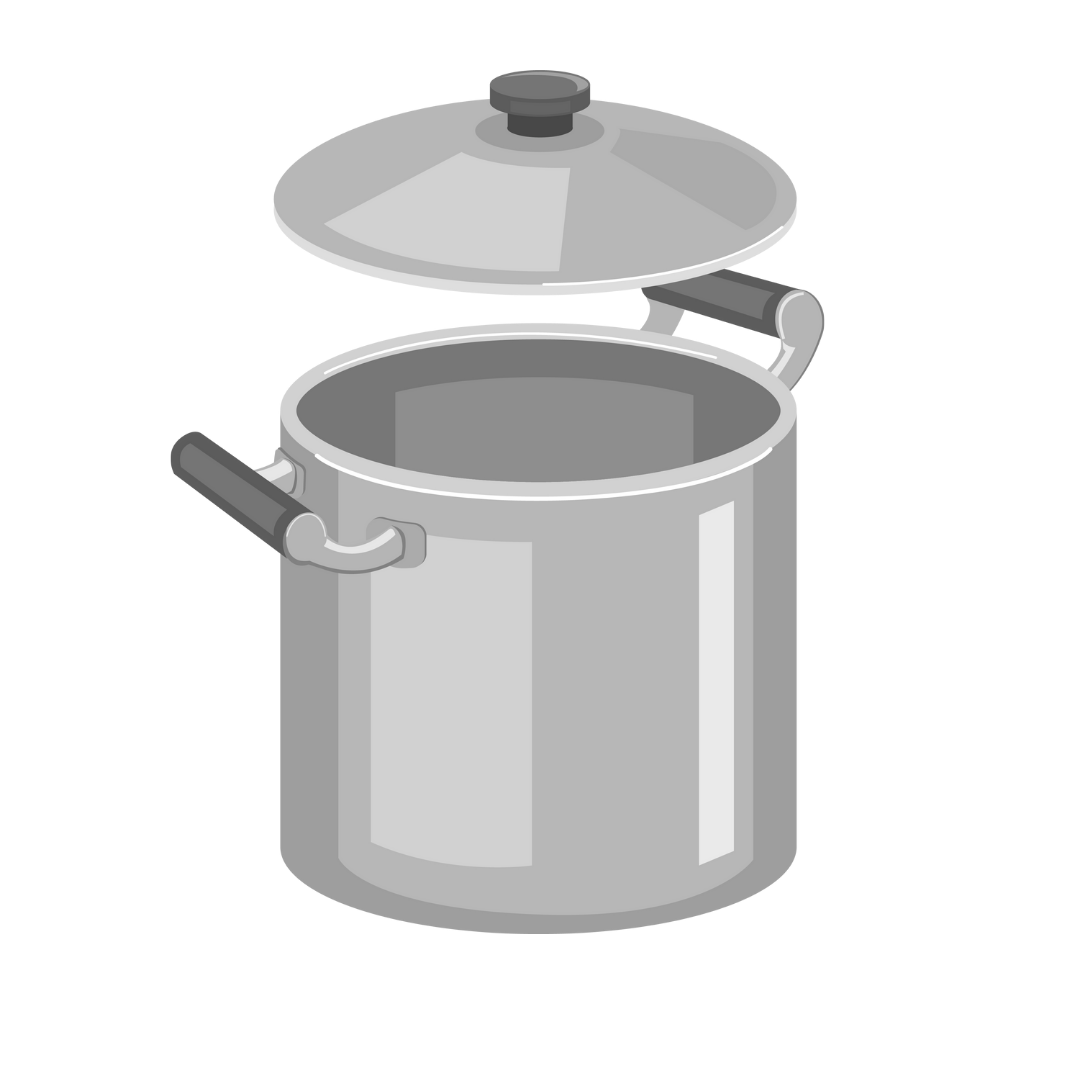
A Dutch oven looks like a traditional stockpot made from a cast iron dutch oven. They do look similar in appearance because they both have tall walls and two handles However, a stockpot is tall and light, which makes it ideal for holding a lot of ingredients and liquid. It makes it a great option to use when making soups, broths, and any recipes that require you to pour off the liquids. Meanwhile, Dutch oven recipes tend to be shorter and heavier than traditional cast-iron skillets, making it difficult to remove excess liquid.
Because Dutch ovens are thicker than regular pots, they maintain a constant heat once they eventually warm up, which allows them to radiate heat evenly. Stainless steel pots don't share this quality. A thick structure means they're suitable for cooking on the stovetop and baking in the oven, which means they're a good choice for recipes that require long cooking times. Stockpots aren't suitable for the stovetop, partly because they're much thinner than regular pots and usually too tall to sit comfortably on the stove.
If you're going to buy just one piece of cookware, it would be best to go for something that has a wider range of uses.
Casserole dish vs Dutch Oven
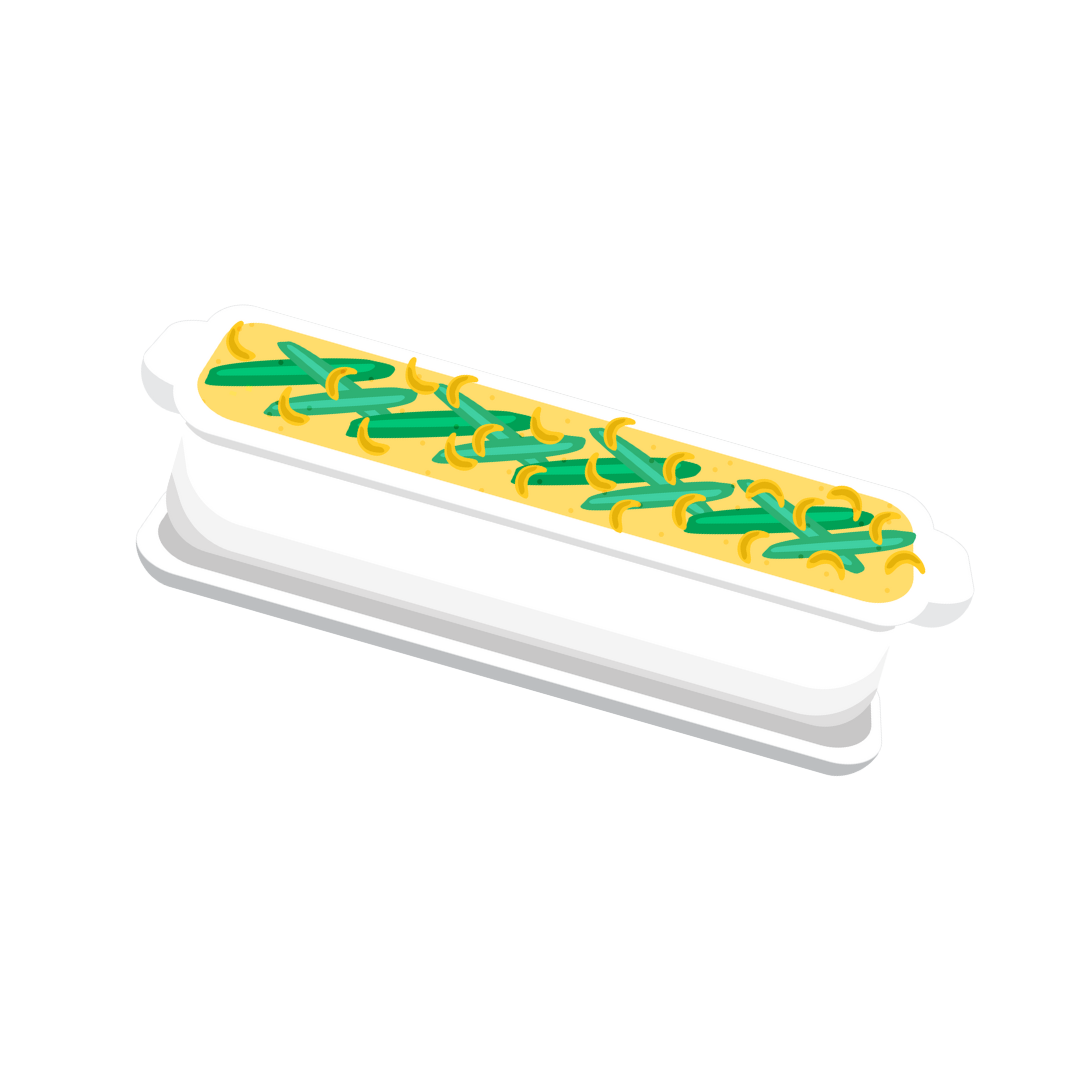
Casseroles and Dutch ovens are often confused because they share similar names of cooking methods, but there’s no reason for them to be interchangeable. The main difference between these two is their function. A casserole dish is only meant for the oven, whereas a Dutch oven can be used on both the stovetop and in the oven. Casseroles aren't as versatile as Dutch ovens and therefore not always a good substitute for them.
Casseroles are normally larger and shallower, making them ideal for cooking similar dishes. You can use them both, but cast iron is the best material for Dutch ovens. Since casseroles are usually much lighter than stews and delicious soups, they're easier to clean. On the flip side of things, casserole dishes made from glass, ceramic, or stainless steel are more fragile than cast iron. The two pieces of cooking equipment come with a tightly fitted cover that allows heat to circulate and cook the food evenly. You can use these two types of dishes for serving.
What are they made out of?
Cast-iron Dutch ovens are usually made of seasoned cast iron, but some are made of cast aluminum, enamel, or ceramic.
Bare cast-iron/ Seasoned cast-iron
These types of cookware are suitable for all heat sources indoor and outdoor dutch ovens have been used for centuries because they retain heat for a prolonged period. They're perfect for cooking hearty dishes. Bare or traditional cast iron cookware surfaces are seasoned and naturally non-stick when their surface is maintained with seasoning. If you decide to get this, remember that proper maintenance is a must. It requires special cleaning (do not throw it in your dishwasher with soapy water and call it a die) and seasoning to remain functional, so only invest in one if you're ready for that kind of responsibility. If you do take care of your cast iron, though, it'll last a lifetime.
Enameled cast-iron
The enameled cookware has layers of enamel-coated on its cast iron for protection and pop of color. The core needs liberal amounts of oil to stop food from sticking to it. One downside to enameled cast iron cookware is its high price tag. These pots can cost you up to $300. Seasoning the enamel is not required. That being said, if you're willing to put in the time and effort, you'll get more than your money’s worth in the long run too
Ceramic
They're lighter than other types, which makes them easier to handle. They offer all the advantages of the bare and enameled cast iron, except for its durability. They're much more likely to crack if they are dropped or subjected to extreme temperature changes. Ceramic and stoneware Dutch ovens shouldn't be used on a stovetop.
Want to have the Best Dutch Ovens?
Here at Culinary Depot, we carry different types of dutch ovens. Contact us or visit our online store for more information.


